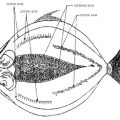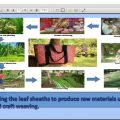Milkfish (Chanos chanos), locally known as bangus, is an important food fish among Filipinos not only because it is the national fish of the country but mostly because it belongs to the very top of their diet, regardless of one’s social status.
As a livelihood, milkfish production is a profitable source of income. In fact, in a paper authored by the group of Wilfredo G. Yap titled, “Milkfish Production and Processing Technologies in the Philippines,” milkfish is considered the “superstar of Philippine aquaculture” owing to its relevance as the most important fish species being farmed in the country. It is cultivated in freshwater, brackishwater, and marine environments. According to Yap, milkfish provides, not only reasonably priced nutritious protein to millions of people in the Indo-Pacific region, but also livelihood opportunities to countless families engaged in aquaculture.
As an important fishery resource, production of milkfish in the Philippines for the last four years (2009-2012) has also been favorable, providing steady growth for the aquaculture industry. According to the Bureau of Agricultural Statistics, production in 2012 went up by 3.80 percent from 372,580.80 mt in 2011 to 386,728.92 mt. The increase was mainly attributed to good farm management, availability of quality fry/fingerling, and proper feeding practices.
Even with the steady growth of the industry, experts believe that it can still grow further particularly in the far-flung bangus-producing areas. A case in point is in Region 13 (CARAGA), particularly in Masao, Butuan, although not a leading producer, where the community heavily relies on bangus production. The area has both mariculture park and fishponds.
Mr. Miguel Baay of the Department of Agriculture- Bureau of Fisheries and Aquatic Resources (DA-BFAR) 13 revealed that bangus is the only species grown in both the mariculture park and in fish ponds due to its adaptability to both saline and non-saline environments. Bangus is also a wide-known species hence, it has become the main source of income of the families in the area. And because there is no processing plant within the community or anywhere near the CARAGA region, bangus can only be sold in fresh form in the market.
Hoping to provide additional source of income for those families living near mariculture parks and fishponds, Baay and BFAR CARAGA introduced interventions, particularly bangus processing technologies. The idea was realized through a project titled, “Community-based Participatory Action Research (CPAR) Program: Bangus Processing in Masao, Butuan City” which was initiated in 2011.
CPAR on Bangus Processing
The CPAR project on bangus processing was chosen because majority of the people in Masao is into bangus production. Bangus is mainly sold as fresh fish in the market as it will be an added cost for them to have it processed or deboned because there is no nearby processing plant in the area. Aside from the livelihood that will be generated with the establishment of a bangus processing plant in the community, the project will encourage more fishermen to go into bangus production. Moreover, operators with idle fishponds will return to bangus production once the demand increases.
The project is implemented by the Department of Agriculture-Bureau of Fisheries and Aquatic Resources 13, CARAGA Fisheries Research and Development Center (CFRDC), led by its center manager, Mr. Miguel O. Baay. The project is being implemented as a community enterprise, to create livelihood opportunities, particularly for the housewives, on bangus processing.
One of the components of the project is the construction of a bangus processing plant which will serve as the center for bangus deboning for the fisherfolk in Masao.
The plant site was carefully chosen and was established in a vacant baranggay lot which, according to Baay, is “free from flood and pollution, with adequate potable water supply, and most importantly, from where waste materials can be disposed of properly.” The site is also strategically located near the fishpond areas and is accessible through regular transportation.
Deboning and Other Value-adding Processing Technologies
Bangus can be processed into various products using traditional, non-traditional, and value-adding technologies. Although these protocols were already standardized as early as 1978, they were adopted only recently, according to a WorldFish report.
Among the various processed bangus, deboned bangus is undoubtedly the most popular value-added milkfish product. It is sold fresh-chilled, smoked, marinated and chilled, or individually packed and frozen, enjoying a good market both locally and abroad. The Food and Agriculture Organization (FAO) reported that the Philippines is the only country in the world that produces boneless milkfish to date.
The production of boneless bangus also paves the way to the rise of other value-added products as processors find ways to use the trimmings and bits of flesh that are invariably removed with the bones. These new milkfish products include fishballs, milkfish lumpia, quekiam, embutido, and chicharon from the skins.
Boneless bangus is a product of a tedious process involving the removal by hand of more than 170 inter-muscular bones. Deboning would seem to be a simple process for most other species of fish but not for milkfish.
One of the unique characteristics of milkfish that serves to limits its marketability is its numerous spines. According to Yap, “a milkfish has 43-44 epaxial intermuscular bones found on each side of the dorsal muscle, 22 -24 spines in between the muscle segments on each side, and two large arch-shaped spines, followed by approximately 19 Y-shaped spines and ending in three single delicate spines in the mid portion of the body on each side.” He added that deboning makes milkfish more acceptable to a wider range of consumers so it is one way of value-adding. From the deboned bangus, it can be further processed into various smoked and frozen products to prolong its shelf-life and further widen its market.
Women Association of Expert Deboners
For the CPAR project, the objective is to establish a plant that will process bangus harvested from the mariculture parks and fishponds in Masao. Once fully established, the association will operationalize it and the fisherfolk can sell their harvested bangus directly to the processing plant.
Currently, the direct beneficiary of the CPAR project is the Bangus Processing Association, a group of 27 housewives in Masao. The association was formed and established in March 2013 after they completed their trainings on bangus processing technologies which is also a component of the project.
According to Mrs. Evangeline Ighot, president of the association and a cooperator of the project, their group envisions the processing plant as a means for the association to generate income as well as minimize the fluctuation of prices of bangus in times of abundant harvest. The association targets the region of CARAGA as one of the potential markets for deboned bangus. “Our barangay has a mariculture park consisting of about 72 cages and an estimated 50 fishponds,” she reported.
To enhance the bangus processing capabilities of the cooperators/beneficiaries and to inculcate food safety among clients, a series of capability building training activities was conducted. The trainings were composed of: 1) Bangus processing and fish packaging and labelling, and 2) Food safety focus on Good Manufacturing Practices (GMP).
The first training was held in April 14-15, 2011 wherein the resource speakers were the Fish Processing Team from BFAR 13 and DOST Regional Office personnel. The topics included: proper handling of fresh fish; methods of fish processing; salt ratio and proportion; steps in bangus deboning; hands-on-training on deboning, marinating, drying and smoking soft-boned bangus; packaging and labelling; function of packaging; packaging development process; modern packaging concepts; purpose of labels; part of a label; and labelling requirements.
The second training which focused on GMP was held on 11 May 2011 with, Ms. Anna Melissa Talavera, chief of BFAR 13 Fish Health Laboratory, as lecturer. The training, according to Mr. Baay focused on compliance with a “set of rules, guidelines and practices related to hygiene and sanitation specific to plant location where the product is being manufactured. Specifically, the topics included: sanitation standard operation procedure, how do microorganisms get into the plant, Sanitation Standard Operating Procedures (SSOP) criteria, role of SSOP in the processing plant, plant hygiene, GMP, and key areas of GMP.
The association will operationalize the bangus processing plant once it is fully installed and established. Currently, the group of Baay is complying with the Hazard Analysis and Critical Control points or HACCP, which is required prior to operation of the plant.
Through the establishment of a bangus processing plant, the association hopes to produce 1,000 deboned bangus every month or 30 kg/day to provide a steady supply of processed fish in the area. But, according to Baay, in order to optimize the potential of the processing plant, they are hoping to increase their initial target. ###
———
For more information about the project, please contact Miguel O. Baay, Project Leader and Center Manager, CARAGA Fisheries Research and Development Center (CFRDC),BFAR 13, Masao, Butuan City. Tel. no. (085) 345-5214, email: rfrdc_caraga@yahoo.com
References:
1. BAS. 2013. Fisheries Situationer January – December 2012. Bureau of Agricultural Statistics: Quezon City, Philippines
2. BAS. 2012. Selected Statistics on Agriculture 2012. Bureau of Agricultural Statistics: Quezon City, Philippines
3. FAO. Chanos chanos. Fisheries and Aquaculture Department. Retrieved on 11 Sept 2013 from http://www.fao.org/fishery/culturedspecies/Chanos_chanos/en
4. Yap, W.G., A.C. Villaluz, M.G.G. Soriano and M.N. Santos. 2007. “Milkfish production and Processing Technologies in the Philippines.” Milkfish Project Publication Series No. 2, 96 pp. The WorldFish Center Contribution No: 1815
Source: Rita T. dela Cruz, BAR Digest July-September 2013 Issue (Vol. 15 No. 3)







Dear Sir/Ma’m,
I am looking for a training in milkfish deboning/processing and came across your website.
Do you have a training like this in the future? I am interested to join. I am from NCR and is willing to go to the place where you will still conduct this training. Actually, we have a fishfarm in Quezon province and I am planning to go involve the locals in our community by putting up a fish processing area in our fish farm.
Looking forward to your reply.
Thank you.
Best regards,
Minette Raymundo